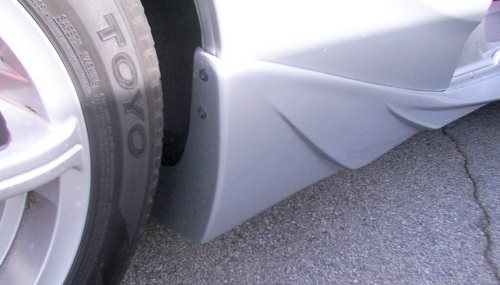
| > Common Myths and Facts about body kits |
MYTH: Urethane is better than fiberglass
THE TRUTH... There are actually advantages and disadvantages to both materials. Unfortunately, fiberglass has received a bad reputation because of some cheap, low quality parts being sold on the market today. The best way to determine the quality is to look for a guarantee or warranty on the parts. High quality fiberglass parts, like those offered by Kaminari, Bomex, CWestin, Greddy GRACER, etc. is actually preferable to a performance tuner as it combines the aerodynamic and aesthetic advantages that body kits provide without adding the excessive weight of a urethane kit.
MYTH: Fiberglass kits break easily
THE TRUTH... Fiberglass can be made many different ways and not all fiberglass is equal. This myth was developed from people's experiences with cheap, low quality fiberglass body kits. There are many high quality fiberglass kits that are very strong. There are many factory auto parts are made of high quality fiberglass.
Fiberglass, regardless of the quality, can crack or break with a strong enough impact. Please note that this same impact would likely damage a factory bumper or metal body part as well. Fiberglass will crack, metal will dent, and urethane will rip - all of which will need to be repaired. (if you plan on crashing your car a lot, you shouldn't modify your car).
MYTH: Fiberglass kits do not fit well
THE TRUTH... Again, this reputation comes from cheap, low quality parts being sold on the market today. Kaminari, Bomex, CWestin, Greddy GRACER, and Wings West are all guaranteed to have perfect fitment.
MYTH: Thicker fiberglass is better
THE TRUTH... Thickness does not necessarily equal strength. There are many other factors from materials to manufacturing techniques that come into play. High quality Japanese manufacturers, such as Bomex, prefer thin, light weight fiberglass. This thin fiberglass is not fragile or cheap like some low quality no-name-brand kits out there. Some of the cheap low-quality kits are made of thick strong fiberglass. This can be a disadvantage as the overly rigid part is harder to install, especially if the fitment is even slightly off.
| > How difficult is it to install a body kit? |

Wings West side skirt attachment
If you have to ask, we'd have to say you probably can't do it on your own. The degree of difficulty for body kit installation can range a large amount. Generally speaking, Kaminari, Bomex, CWestin, Greddy GRACER, and Wings West body kits will be the easiest to install as they are manufactured to very high quality standards and usually include installation hardware and instructions. Other body kits may require more modification to obtain a perfect fitment.
We always recommend that you have your body kit installed by a professional who is experienced with custom fiberglass body work. A normal auto body/collision repair shop may not be able to install the aftermarket body kit properly.
| > How good is the fitment of body kits? |

genuine trd front bumper
The fitment of body kits depends on the part and the car. Kaminari, Bomex, CWestin, Greddy GRACER, and Wings West body kits fit extremely well and require very little work. Other parts may require modifications including grinding, sanding, cutting, glassing, etc.
Please note that many people purchase body kits as a result of a car accident. If your car has ever been in any accident, regardless of how minor, this may effect the fitment of the part.
| > Do body kits/Spoilers come primered? |

top; celica 'c-one style' spoiler, bottom; nissan spoiler
No, all kits will need to be prepped before painting. Preparation can include filling and sanding prior to primering. Be sure to test fit all parts before applying any paint.
| > What is difference between urethane and fiberglass body kits and which one is better? |

left to right; thin fiberglass, thick fiberglass, poly urethane
Urethane and fiberglass are two different materials used to make body kits.
Urethane body kits have perfect or near-perfect fitment and, generally speaking, are more durable than fiberglass parts. Because they are made of a rubbery material they can flex and bend without cracking or breaking. They are also more chip-resistant than fiberglass parts. Urethane, however, is more difficult to paint. If painted incorrectly the paint may flake or peal off in patches. Urethane can also sag over time or warp due to extreme heat (being left in the sun often).
Fiberglass parts are generally lighter and easier to modify if any custom work is planned. Fiberglass is also easier to repair and less difficult to paint. Fiberglass, however, is more prone to chipping from road debris, etc.
Many people in the U.S. prefer the quality and durability of urethane or thick heavy fiberglass parts. However, people in Japan believe that urethane is too heavy to use for aero parts and prefer light weight (thin) fiberglass.
Article written by Min @ MB Autosport
Photos by Isaac DeCoursey @ EverythingCelica.com